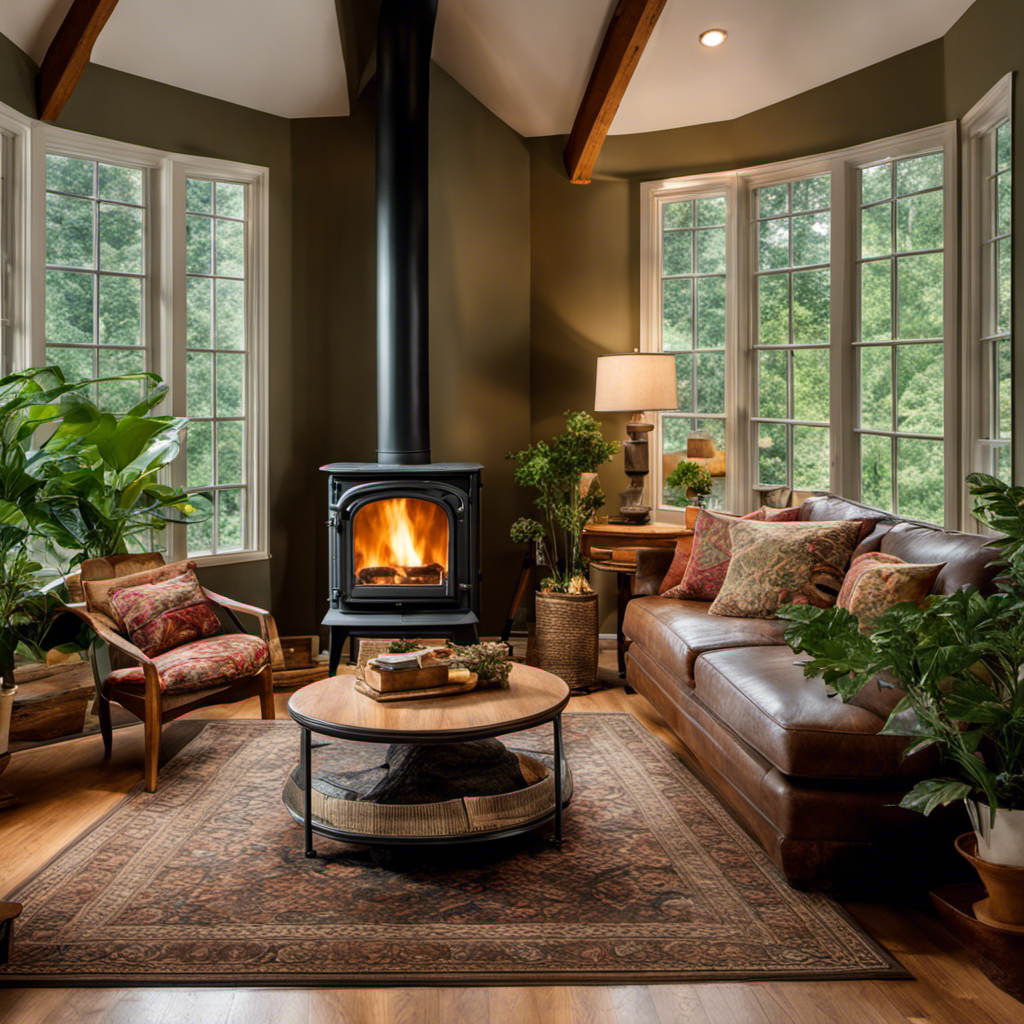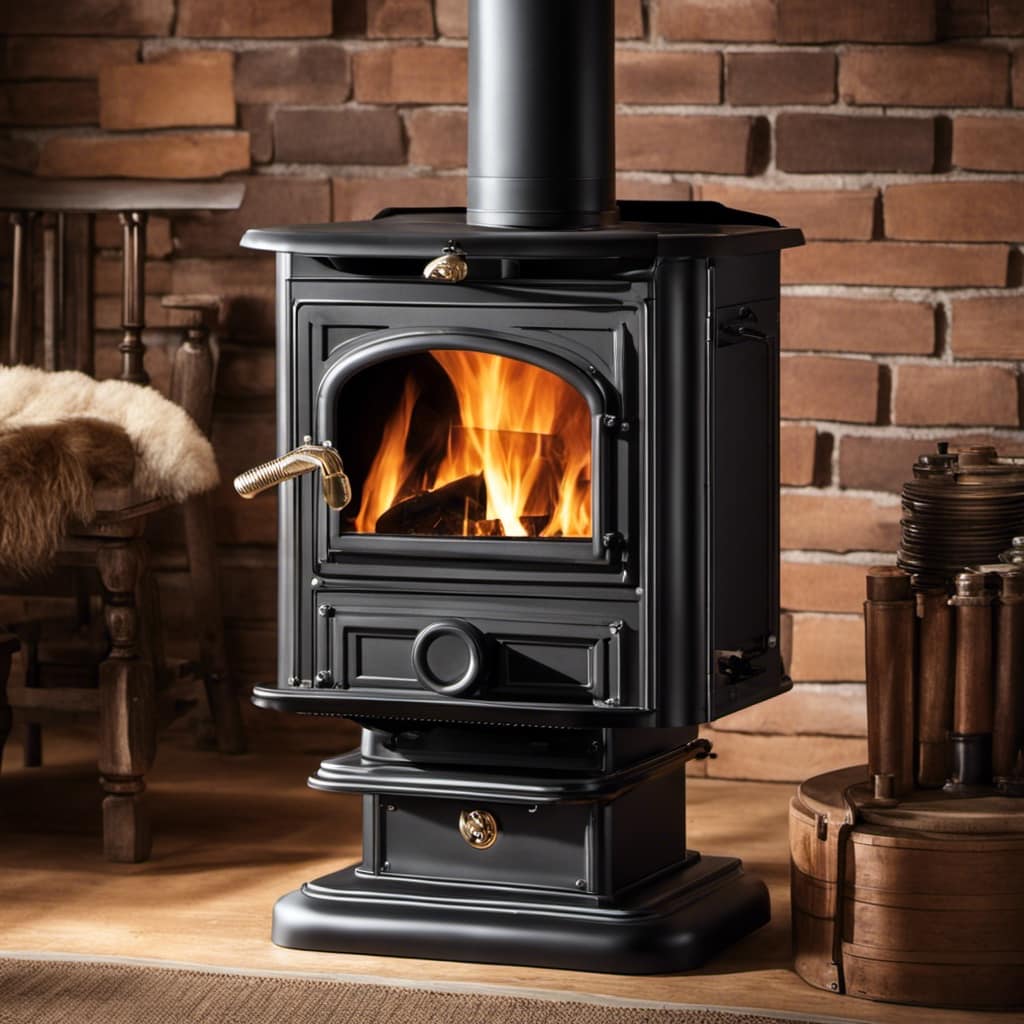
Upon entering my living room, I was immediately greeted by a noxious smell. The source of this unpleasant odor? The wood stove, quietly tucked away in the corner.
Curiosity piqued, I delved into the possible causes of this unpleasant smell. Inadequate ventilation, creosote buildup, and moisture issues were all potential culprits.
Armed with knowledge and determination, I set out to uncover the secrets of banishing this stench. Join me as we explore the reasons behind a stinky wood stove and discover effective cleaning and maintenance tips.
Key Takeaways
- Creosote buildup in the chimney is a common cause of the odor when the wood stove is not in use.
- Inadequate ventilation and lack of air circulation contribute to the lingering odors.
- Regular chimney inspections and cleanings are necessary to prevent creosote buildup and ensure occupant safety.
- Keeping the wood stove dry, well-ventilated, and properly maintained helps prevent moisture and mold issues.
Possible Causes of the Odor
I think the odor might be caused by a build-up of creosote in the chimney. Chimney blockage can occur when creosote, a black, sticky substance, builds up inside the chimney. Creosote is formed when wood burns incompletely and releases smoke. Over time, this substance can accumulate and cause a strong, unpleasant smell.
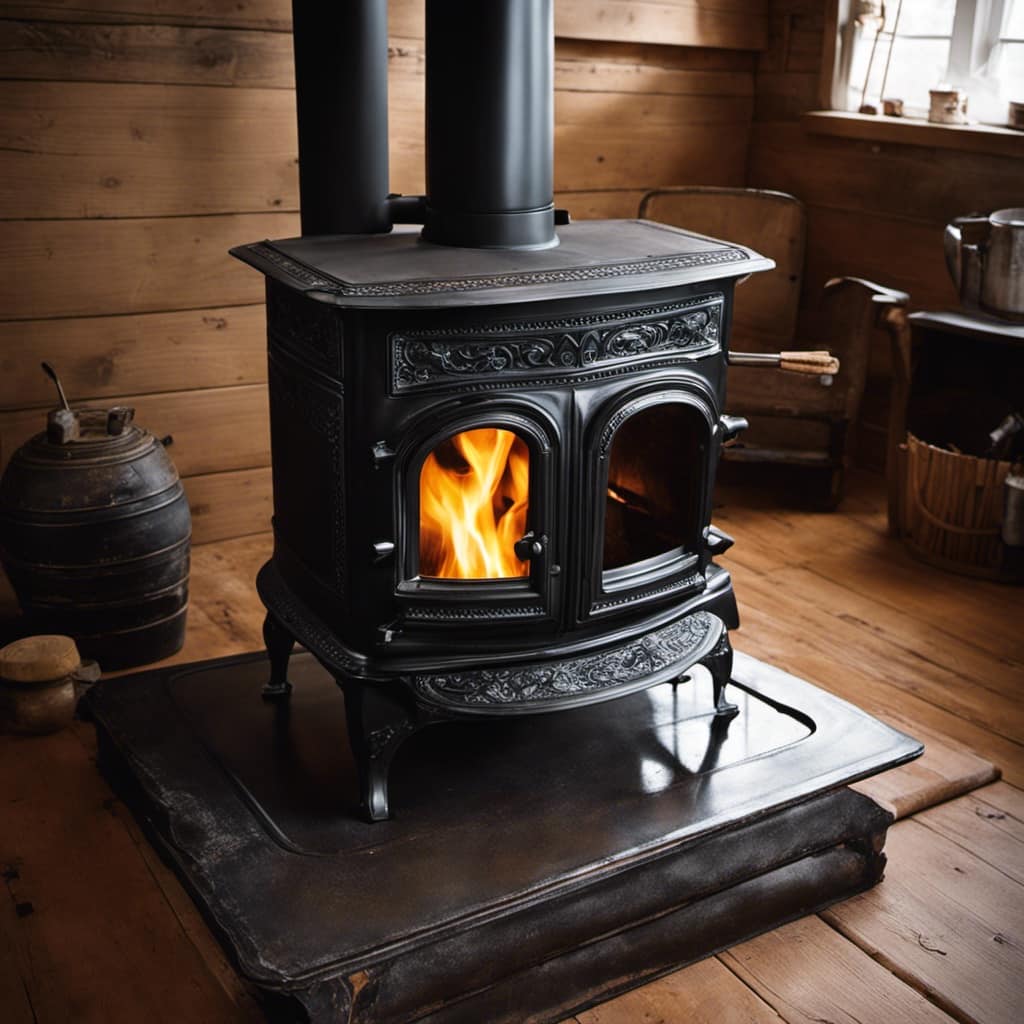
Not only does this odor affect the air quality in your home, but it can also be a potential fire hazard. When the wood stove isn’t in use, the creosote can emit a strong smell due to the lack of ventilation and air circulation.
It’s important to address this issue promptly to prevent any further blockage and to ensure the safety and comfort of your home.
Insufficient Ventilation
The smell is likely due to there not being enough airflow in the room. Insufficient ventilation can cause odors to linger and become more noticeable.
To eliminate the odor, there are a few methods you can try. First, ensure that the wood stove is cleaned regularly and that any ash or debris is removed. This can help reduce the buildup of odorous particles.

Additionally, using odor eliminator sprays or placing odor-absorbing materials, such as activated charcoal, near the stove can help neutralize the smell. However, it’s important to note that these methods are temporary solutions and won’t address the root cause of the problem.
Regular air circulation is crucial in preventing odors from occurring in the first place.
Now, let’s explore the next potential cause of the wood stove odor: creosote buildup.
Creosote Buildup
To prevent creosote buildup, regular chimney inspections and cleanings are essential. Creosote is a sticky, flammable substance that can accumulate in chimneys and wood stove flues over time. If left unchecked, it can pose serious fire safety risks and health concerns. Creosote is highly combustible and can easily ignite, leading to chimney fires that can quickly spread to the rest of the house. Moreover, when creosote burns, it releases toxic gases and particles that can be harmful when inhaled.
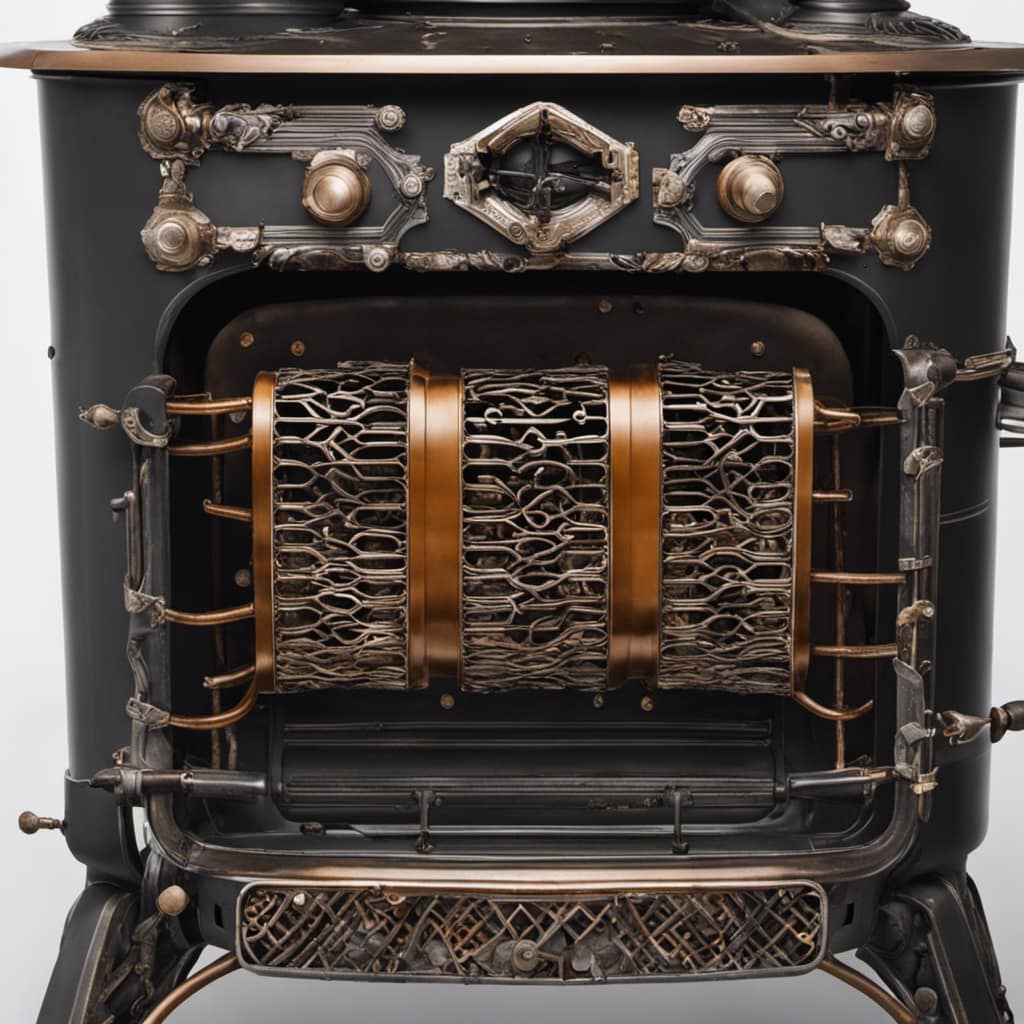
Regular inspections and cleanings help remove any creosote buildup, reducing the risk of fire and safeguarding the health of the occupants. By addressing creosote buildup, we can ensure a safe and healthy environment for everyone.
Moving on to moisture and mold issues, let’s explore how they can also impact the performance of a wood stove.
Moisture and Mold Issues
Moisture and mold can negatively affect the performance of a wood stove, leading to inefficient heating and potential health hazards. When moisture enters the wood stove, it can cause the metal components to rust and deteriorate over time. This not only reduces the stove’s efficiency but also increases the risk of carbon monoxide leakage.
Mold, on the other hand, can release spores into the air, triggering allergies and respiratory problems. To prevent these issues, it’s important to keep the wood stove dry and well-ventilated. Make sure to store firewood in a dry area and use a moisture meter to check its moisture content before burning. Additionally, regularly inspect the stove for any signs of leaks or condensation.

By taking these preventive measures, you can ensure a healthier and more efficient wood stove.
Now, let’s move on to cleaning and maintenance tips.
Cleaning and Maintenance Tips
I find cleaning and maintaining my wood stove to be an essential part of keeping it in good working condition. Not only does it ensure its efficiency, but it also helps prevent any unpleasant odors when the stove isn’t in use.
Here are some tips to help you with your wood stove maintenance:
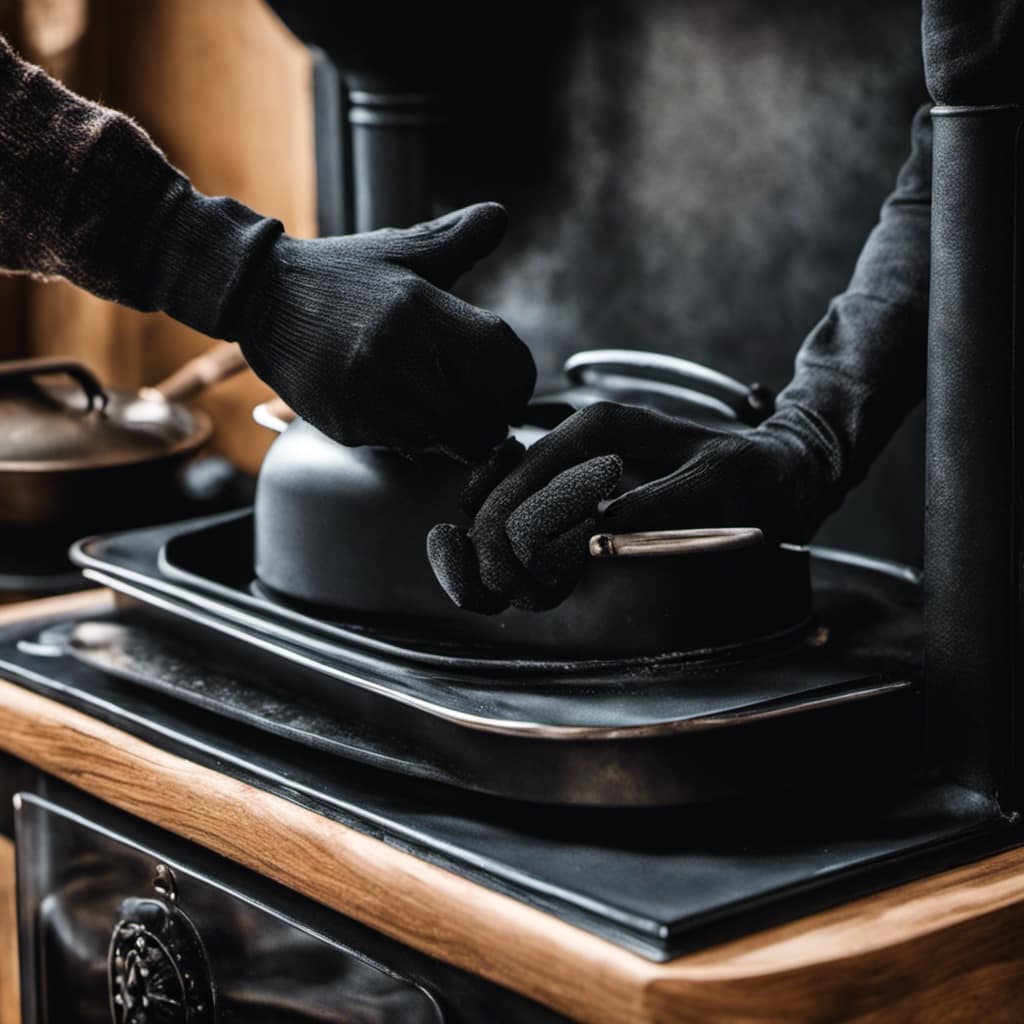
-
Proper ash disposal: Empty the ash regularly and dispose of it in a metal container with a tight-fitting lid. This helps prevent any potential fire hazards and keeps your stove clean.
-
Chimney inspection: Schedule regular inspections to ensure that your chimney is clean and free from any blockages. This will help prevent smoke and odors from entering your home.
-
Clean the stove regularly: Scrub the interior of the stove with a wire brush to remove any built-up soot or creosote. This improves the stove’s efficiency and reduces any potential odors.
-
Check the gaskets: Replace any worn-out gaskets to ensure a tight seal between the stove and the door. This prevents any air leaks that can lead to odors and inefficient burning.
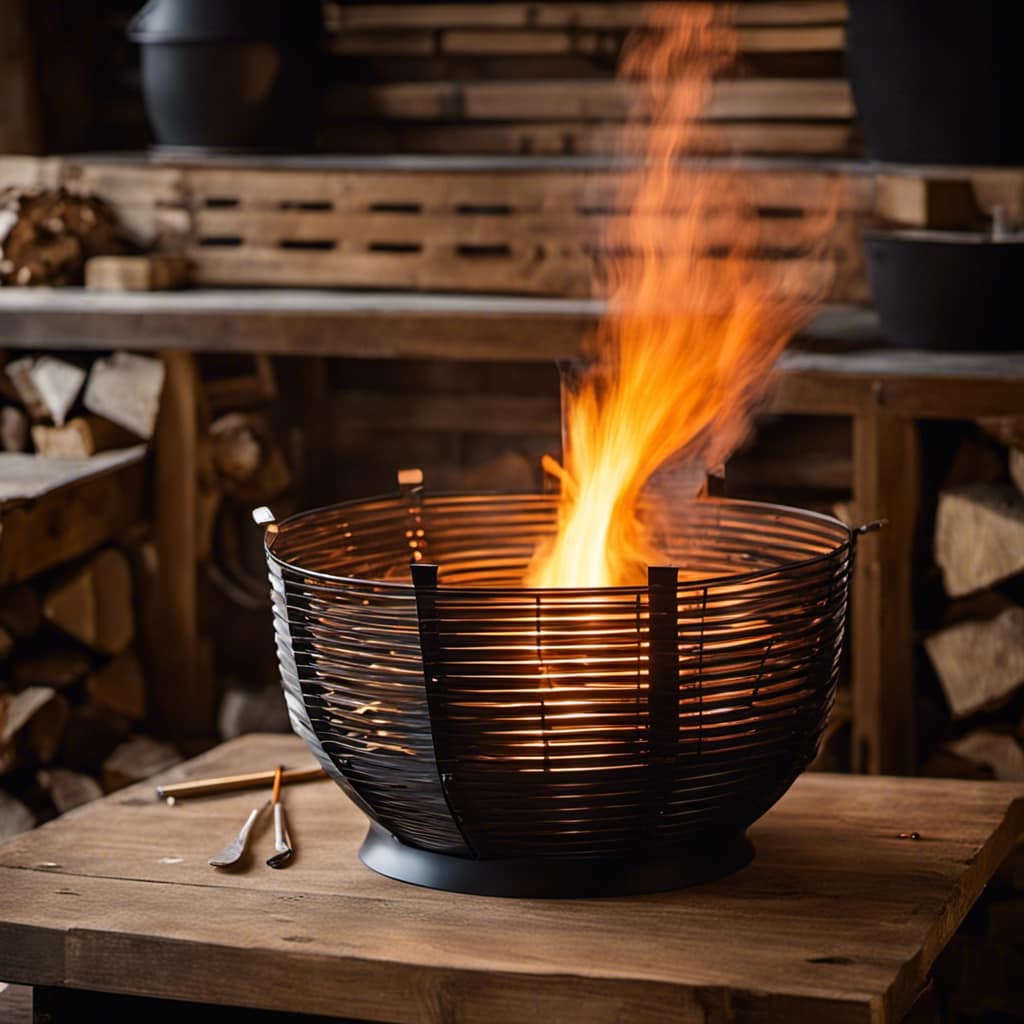
Frequently Asked Questions
Can the Odor From a Wood Stove When Not in Use Be Harmful to My Health?
Yes, the odor from a wood stove when not in use can be harmful to my health. It can affect indoor air quality and cause respiratory issues. To reduce or eliminate the odor, proper ventilation and regular cleaning are recommended.
Is It Normal for a Wood Stove to Emit a Smell Even When It’s Not Being Used?
Yes, it’s normal for a wood stove to emit a smell even when not in use. Possible causes include creosote buildup, moisture, and debris. To reduce odor, clean the stove, check for leaks, and ensure proper ventilation.
How Can I Determine if the Odor Is Coming From the Wood Stove or From Another Source in My Home?
To determine the odor source, I would first check for common causes of home odors like mold, pets, or rotting food. If none of those are present, I would then focus on the wood stove as a potential culprit.
Are There Any Specific Types of Wood That Are More Likely to Cause a Lingering Odor in a Wood Stove?
Certain types of wood can contribute to a lingering odor in a wood stove. Softwoods like pine and fir tend to have a stronger scent, while hardwoods like oak and maple produce less noticeable odors.

Can the Odor From a Wood Stove When Not in Use Be Eliminated Completely, or Will It Always Be Present to Some Extent?
Eliminating wood stove odor can be challenging, but it is possible to minimize the smell when the stove is not in use. Proper cleaning and maintenance, using seasoned wood, and ensuring good ventilation can help reduce lingering odors.
Conclusion
In conclusion, the foul fumes emanating from a wood stove when not in use can be attributed to various factors. These factors include insufficient ventilation, creosote buildup, and moisture-related problems.
By implementing regular cleaning and maintenance practices, one can effectively combat these issues and ensure a pleasant and odor-free environment.
Remember, proper care and attention are essential to maintaining the functionality and fragrance of your wood stove.

Growing up surrounded by the vast beauty of nature, Sierra was always drawn to the call of the wild. While others sought the comfort of the familiar, she ventured out, embracing the unpredictable and finding stories in the heartbeat of nature.
At the epicenter of every remarkable venture lies a dynamic team—a fusion of diverse talents, visions, and passions. The essence of Best Small Wood Stoves is crafted and refined by such a trio: Sierra, Logan, and Terra. Their collective expertise has transformed the platform into a leading authority on small wood stoves, radiating warmth and knowledge in equal measure.



